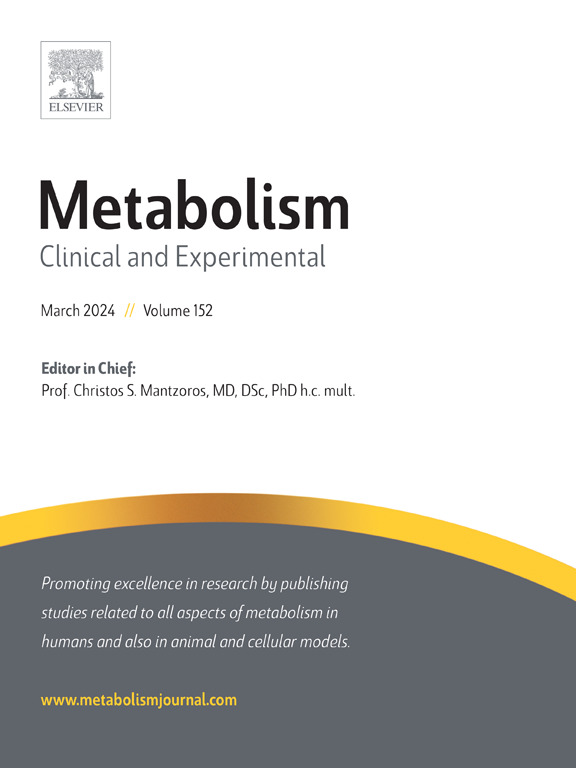Mitochondrial phosphopantetheinylation is required for oxidative metabolism
IF 11.9
1区 医学
Q1 ENDOCRINOLOGY & METABOLISM
引用次数: 0
Abstract
4′-Phosphopantetheinyl (4’PP) groups are essential co-factors added to target proteins by phosphopantetheinyl transferase (PPTase) enzymes. Although mitochondrial 4’PP-modified proteins have been described for decades, a mitochondrially-localized PPTase has never been found in mammals. We discovered that the cytoplasmic PPTase aminoadipate semialdehyde dehydrogenase phosphopantetheinyl transferase (AASDHPPT) is required for mitochondrial respiration and oxidative metabolism. Loss of AASDHPPT results in failed 4’PP modification of the mitochondrial acyl carrier protein and blunted activity of the mitochondrial fatty acid synthesis (mtFAS) pathway. We found that in addition to its cytoplasmic localization, AASDHPPT localizes to the mitochondrial matrix via an N-terminal mitochondrial targeting sequence contained within the first 20 amino acids of the protein. Our data show that this novel mitochondrial localization of AASDHPPT is required to support mtFAS activity and oxidative metabolism. We further identify five variants of uncertain significance in AASDHPPT that are likely pathogenic in humans due to loss of mtFAS activity.

线粒体磷酸化是氧化代谢所必需的。
4'-磷酸蚁基(4' pp)是由磷酸蚁基转移酶(PPTase)添加到靶蛋白上的必需辅因子。虽然线粒体4' pp修饰蛋白已经被描述了几十年,线粒体定位的PPTase从未在哺乳动物中发现过。我们发现细胞质PPTase(氨基己二酸半醛脱氢酶)是线粒体呼吸和氧化代谢所必需的。AASDHPPT的缺失导致线粒体酰基载体蛋白的4'PP修饰失败,线粒体脂肪酸合成(mtFAS)途径的活性减弱。我们发现,除了细胞质定位外,AASDHPPT还通过蛋白质前20个氨基酸中的n端线粒体靶向序列定位到线粒体基质上。我们的数据表明,AASDHPPT的这种新的线粒体定位是支持mtFAS活性和氧化代谢所必需的。我们进一步确定了AASDHPPT中5种不确定意义的变异,由于mtFAS活性的丧失,它们可能在人类中具有致病性。
本文章由计算机程序翻译,如有差异,请以英文原文为准。
求助全文
约1分钟内获得全文
求助全文
来源期刊

Metabolism: clinical and experimental
医学-内分泌学与代谢
CiteScore
18.90
自引率
3.10%
发文量
310
审稿时长
16 days
期刊介绍:
Metabolism upholds research excellence by disseminating high-quality original research, reviews, editorials, and commentaries covering all facets of human metabolism.
Consideration for publication in Metabolism extends to studies in humans, animal, and cellular models, with a particular emphasis on work demonstrating strong translational potential.
The journal addresses a range of topics, including:
- Energy Expenditure and Obesity
- Metabolic Syndrome, Prediabetes, and Diabetes
- Nutrition, Exercise, and the Environment
- Genetics and Genomics, Proteomics, and Metabolomics
- Carbohydrate, Lipid, and Protein Metabolism
- Endocrinology and Hypertension
- Mineral and Bone Metabolism
- Cardiovascular Diseases and Malignancies
- Inflammation in metabolism and immunometabolism
 求助内容:
求助内容: 应助结果提醒方式:
应助结果提醒方式:


